With little in the way of health science to call upon for deliverance from devastating epidemics, the Christian faithful of old turned to Patron Saints for hope. We see these saints in Medieval and Renaissance art, but can we fully grasp the profound meaning embedded in the works?
Without deep faith, and the agonizing fear and desolation wrought by unbridled contagion, perhaps full comprehension will always be beyond us. But today’s coronavirus pandemic may help us better understand the context that spawned these Patron Saints in art.
There are more than a dozen saints who have been thought to provide protection and succor in times of pestilence. St. Roch is perhaps the most widely-recognized Patron Saint of the plague, but there are others who were — and still are — revered regionally.
For example, Edmund the Martyr was the Patron Saint of pandemics to the people of East Anglia (northeast of London). The Irish turned to St. Coloman in times of plague, and Rhinelanders invoked Anthony the Great.
Perhaps the most surprising to us at this moment in time is Saint Corona. This little-known patroness of plagues and epidemics is especially venerated in Austria and Bavaria.
I suspect St. Corona is about to experience a wide-ranging revival of popularity!

The names of the saint and the virus both derive from the Latin word for crown.
In art, a crown is featured in the iconography of Christian martyrs, and Saint Corona is always shown carrying her crown of martyrdom.
The coronavirus is in the SARS family. SARS first emerged in 2002, and when seen with early electron microscopes the virus appeared to be shaped like a crown. Now we know it looks more like a moldy orange studded with cloves, but the coronavirus monicker stuck.
Saint Corona, by the Master of the Palazzo Venezia Madonna. National Gallery of Denmark, Copenhagen
Widely-loved, Saint Christopher has long been invoked to protect against danger while traveling — including contracting infectious disease – a danger we can all very much appreciate today. Christopher was one of the 14 Holy Helpers who were summoned to intercede in times of pestilence. It was believed that their combined intercession was especially effective against the Black Death.
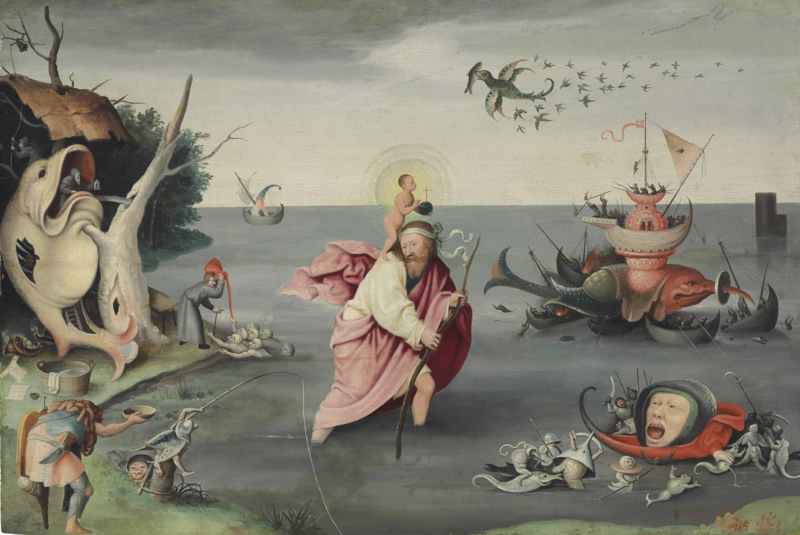
I’m sure that many Italian Catholics today – especially in Palermo — are praying to St. Rosalia. Although she lived as a hermit in a cave on Mount Pellegrino in the 12th century – she is thought to have died c. 1160 — her story didn’t really begin until almost 500 years later. In 1624, Palermo was overcome by plague, and Rosalia appeared — first to a sick woman, then to a hunter whom she directed to the cave where her remains were to be found. He brought her bones to Palermo where they were carried in procession through the city, whereupon the pestilence came to an end.
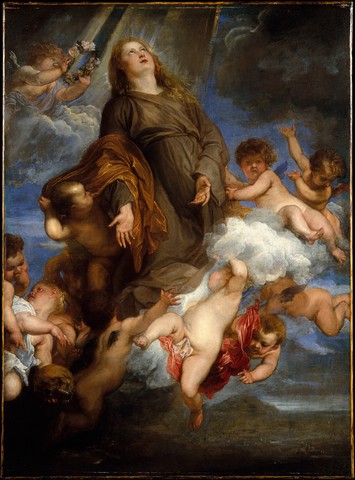
Metropolitan Museum of Art, New York NY
Anthony Van Dyck was in Palermo in 1624, when this plague broke out and Saint Rosalia’s remains were found. The miracle of this discovery and the end of the pestilence meant that images of the Saint were in great demand, and he produced a number of paintings featuring St. Rosalia.
With Palermo under quarantine, Van Dyck had begun to sketch out a self-portrait on canvas, but the wide-spread veneration of this new patron saint prompted him to abandon that plan. He painted over it, using the canvas for his first Saint Rosalia Interceding for the Plague-stricken of Palermo. The piece was bought, or perhaps commissioned, by a Sicilian nobleman and art collector, Antonio Ruffo. It eventually found its way to the Metropolitan Museum of Art where, in 1871, it became one of the first significant European paintings to enter the Met’s collection.
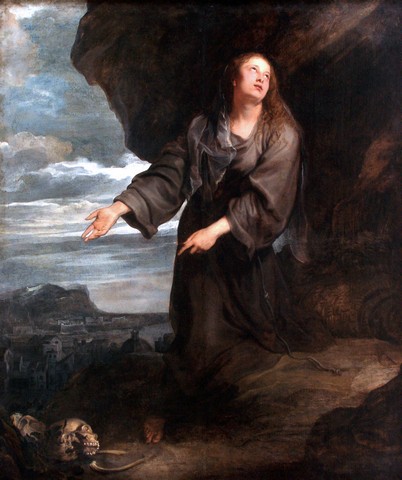
In another, more subdued, painting he did a few years later, van Dyck again showed an earthbound St. Rosalia interceding for the city, with the port of Palermo visible in the background.
The French saint, Roch — known variably as San Rocco (Italian), San Roque (Spanish), São Roque (Portuguese), and Rollox (Scotland) — is probably the first Patron Saint against the plague that most people think of.
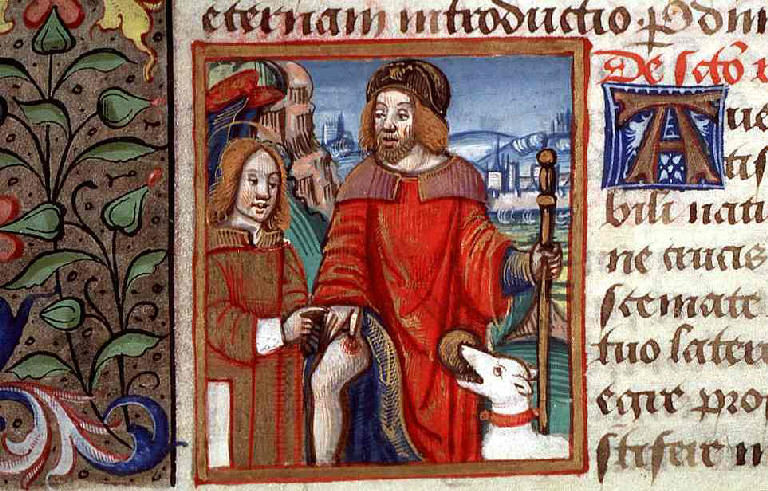
Although the bubonic plague was the most virulent and devastating pestilence of yore, in medieval times the term “plague” was used to indicate a whole array of contagious epidemics. In fact, St. Roch is invoked against plagues, epidemics, AIDS and cholera. Oddly enough, he is also the Patron Saint of bachelors, gravediggers, dogs and numerous cities, among other things. But let me not digress!
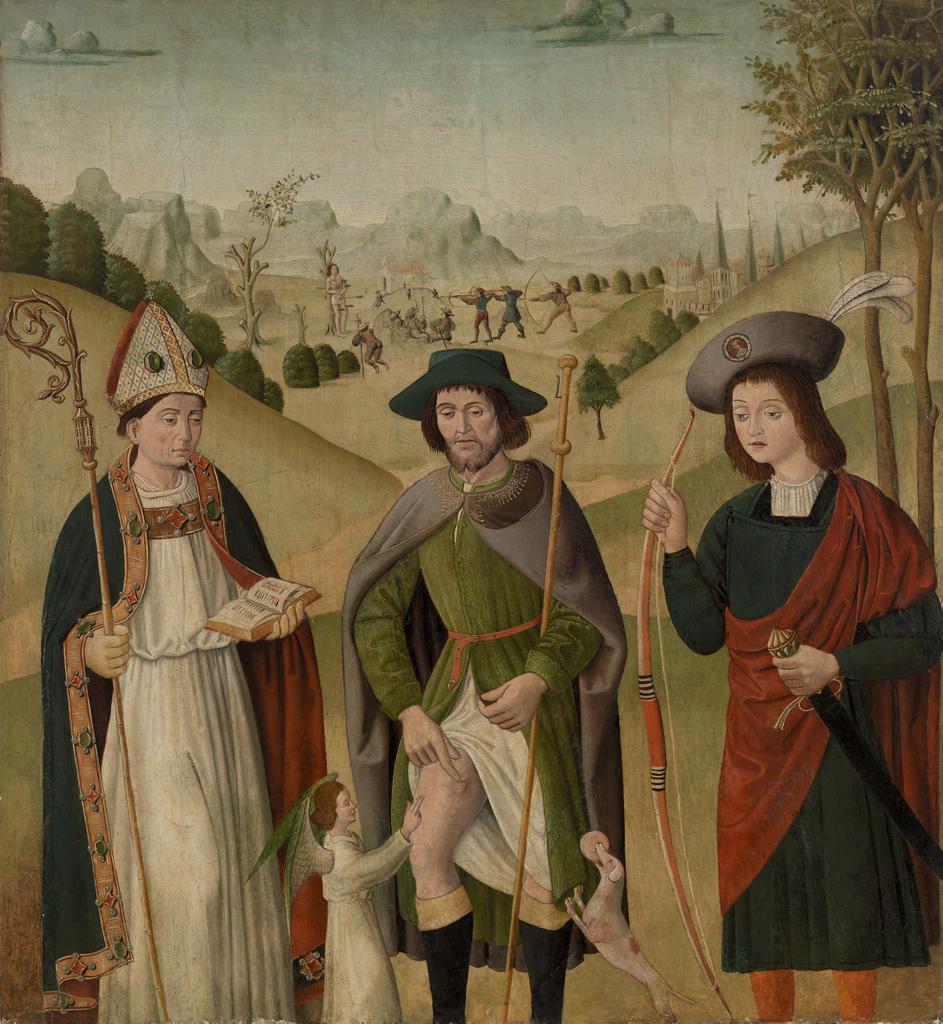
St. Roch is usually easy to identify in art, because of his very distinctive iconography. Any combination of these attributes tell us who we’re seeing: He carries the walking stick of a pilgrim; he points to a wound on his thigh; a small dog is in the frame; a loaf of bread is to be seen — often in the dogs’ mouth; and an angel may or may not be present. All these symbols are drawn from his story.
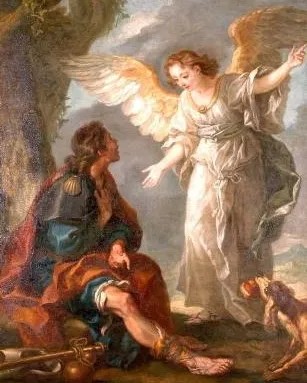
The Miraculous Healing of Saint Roch.
Museum of Art and Archaeology, Senli, France
Born in Montpellier around 1348, Roch lived just 30 years. Upon the death of his wealthy, noble parents when he was 20, he distributed all his worldly goods among the poor and set out as a mendicant pilgrim for Rome. Arriving in Italy during an epidemic, he applied himself to tending the sick in the public hospitals, and is said to have effected many miraculous cures through prayer, the sign of the cross, and the touch of his hand.

At Piacenza, he himself became infected and he was expelled from the town. He went into the forest and built himself a hut where, miraculously, a spring bubbled up to supply him with water. But he would have perished had a hunting dog not appeared carrying bread in its mouth.
The dog returned time and again, bringing bread and licking Roch’s wounds until, gradually, they healed.
Francesco Ribalta (1565–1628), Saint Roch, c.1600-1610. Museo de Bellas Artes, Valencia
Roch later recalled that an angel had directed the dog to help him. Other versions say that Count Gothard — on whose land Roch had taken shelter — had been following his hunting dog, found Saint Roch and gave him aid. In a near-death delirium, a man of such deep faith might very likely experience Gothard and his dog as heaven-sent.
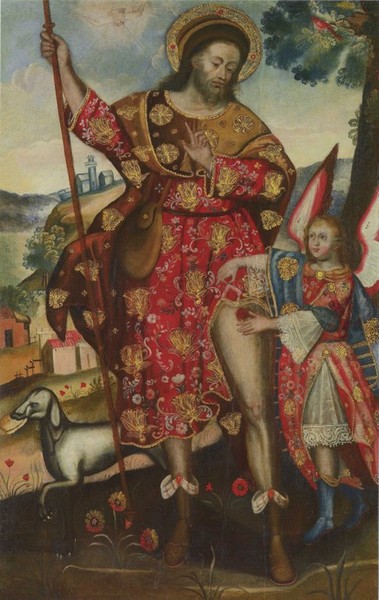
Priet-Gaudibert Collection, Versailles, Yvelines, France.
News of Roch’s miraculous healing ministrations traveled quickly throughout Europe — and eventually to the Americas — and within just a few decades, Saint Roch gained wide-spread fame. His popularity may have been boosted by the knowledge that he himself had contracted the plague and survived, providing hope and proof that the plague was not necessarily a death sentence.
The story is told that when the Council of Constance was threatened with plague in 1414, public processions and prayers for the intercession of Roch were ordered, and the outbreak ceased.
The cult of Roch gained momentum during the horrendous bubonic plague epidemic that shattered northern Italy in 1477–79 — despite the Venetian practice requiring that incoming ships remain offshore for 40 days before being allowed to dock. (Our word quarantine derives from quaranta, the Italian word for forty.)
If you’ve been to Venice, you’ve seen the massive, Baroque 17th-century Basilica della Salute facing the entrance of the Grand Canal at the San Marco Basin. Its construction began in 1631 as thanksgiving to the Virgin Mary for deliverance of the city from yet another major outbreak of the plague. (The Italian word salute means health.)

Basilica della Salute 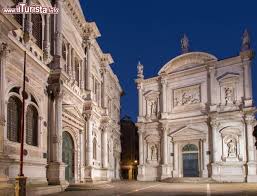
Scuola Grande di San Rocco and the church of San Rocco
Giving thanks for deliverance from pestilence by building a church was established practice. In 1485 — roughly 150 years before the Basilica della Salute — the Scuola Grande di San Rocco and the adjacent church of San Rocco were constructed in the heart of the city by a group of wealthy citizens who had formed the Confraternity of San Rocco. For a city as beset with pestilence as Venice was, it comes as no surprise that San Rocco was named the Patron Saint of Venice.
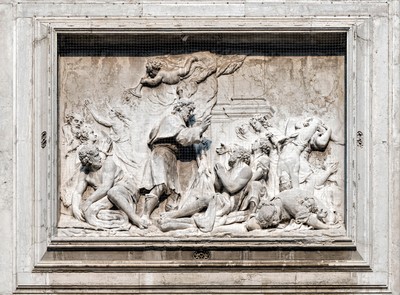
The church of San Rocco is home to a series of six paintings by Tintoretto which feature episodes in the life of this beloved Patron Saint.
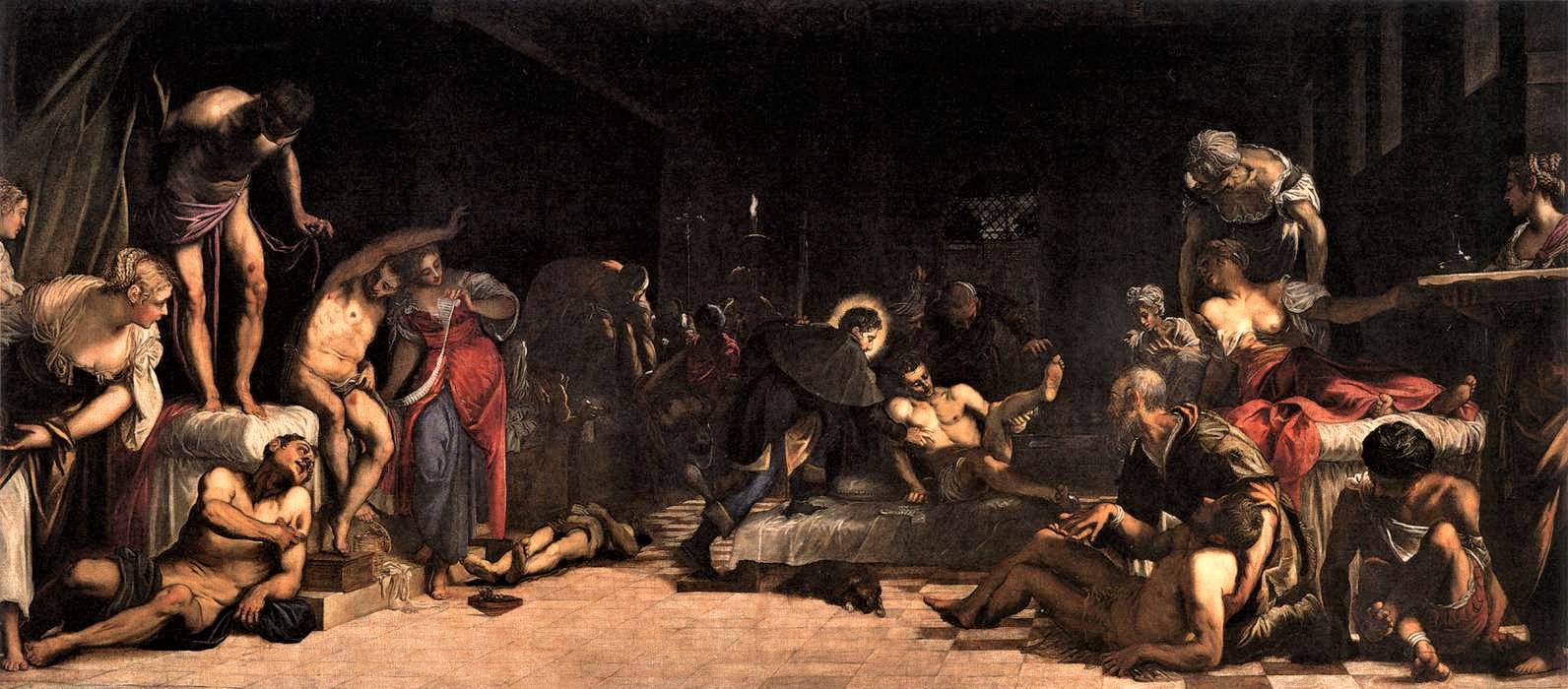
Venice has three more votive churches, each built after one of the plague epidemics that repeatedly crushed the city. They were built in fulfillment of a vow: “Deliver us from this pestilence and we will build a church in your name.” These votive churches were a psychological defense against a sense of impotence and futility, the building process providing purpose and a gradual return to normal.

Following the Black Death, especially the Italian epidemic of 1477–79, images of Christian martyrs and saints began to appear more frequently in art. A visual tradition emerged, drawn from historical texts and writings on the lives of the saints. Soon each saint was being depicted with identifying attributes that made him or her instantly recognizable to the Christian faithful.
We can easily recognize the more popular saints by learning their iconography. But without really knowing what life was like at the time, can we ever fully comprehend the meaning that these images conveyed to contemporary viewers?
Perhaps — as a result of today’s coronavirus epidemic that has brought our own habits and expectations up short — we will now have a deeper appreciation of the substance of artworks that depict the Patron Saints of pestilence.
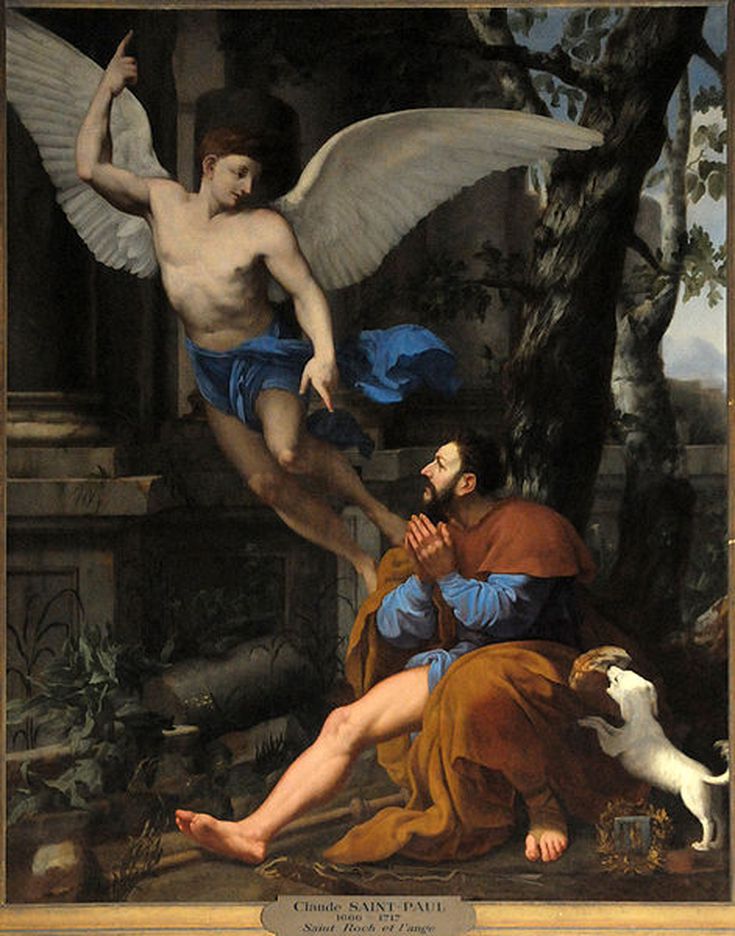
Art Things Considered is an art and travel blog for art geeks, brought to you by ArtGeek.art — the search engine that makes it easy to discover more than 1300 art museums, historic houses & artist studios, and sculpture & botanical gardens across the US. Just enter the name of a city or state to see a complete catalog of museums in the area. All in one place: descriptions, locations and links.

I am interested in all Western art including PreColumbian
I think this is a real great blog.Really looking forward to read more. Fantastic.